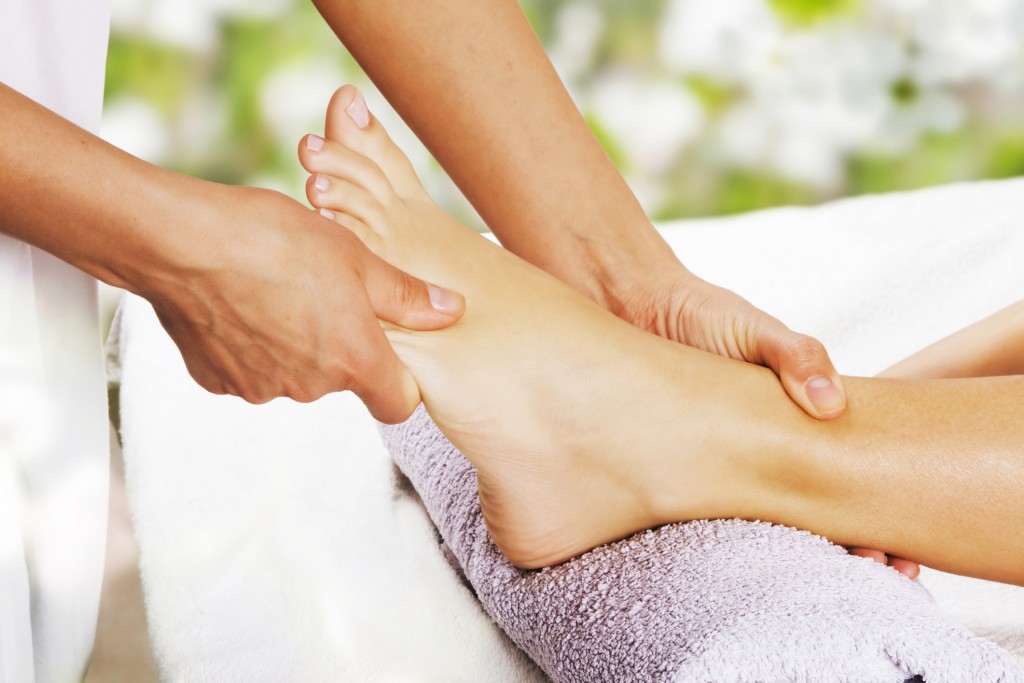Sound Healing Technique’s for the Feet
A Tuning Fork Technique for the Feet
 Sound is an intricate part of our world. While you probably already provide soothing music or background sounds during your massage sessions, incorporating sound therapy, such as tuning fork therapy, into your sessions can add a serene, spa-like element to a massage and leave your clients feeling even more relaxed and rejuvenated.
Sound is an intricate part of our world. While you probably already provide soothing music or background sounds during your massage sessions, incorporating sound therapy, such as tuning fork therapy, into your sessions can add a serene, spa-like element to a massage and leave your clients feeling even more relaxed and rejuvenated.
My first experience with sound:
I have been fascinated with sound since I was a little girl. I recall my first experience regarding sound, during a quiet school morning. I rushed into my second-grade classroom and observed a blind man very intently using a tuning fork to tune our classroom piano. As I watched how he took an old, broken-down piano and turned it into a wonderful-sounding instrument, an interesting thought came into my mind: If he could fine-tune an old piano using sound, I was sure sound could fine-tune our bodies. Many practitioners use the power of these vibrations to create custom tuning fork techniques.
Sound and healing practices:
I am Native American, and as in many indigenous cultures, sound and nature are often incorporated into healing practices. The combination of my being Mescalero Apache and a massage therapist and instructor has given me the opportunity to develop wonderful techniques that utilize the healing properties of sound.
I have developed training courses for massage therapists and bodyworkers involving sound therapy using tuning forks. Basic training is required; check your state and local laws to be sure you meet the requirements before offering any sound therapy technique.
A tuning fork session for feet:
Sound therapy with tuning forks is very relaxing for clients and allows you to provide an easy, practitioner-friendly therapy to specific areas of the client’s body. In a tuning fork session I designed for the feet, I focus on the sound of om, which is at frequency 136.1 hertz; I have found this sound to be successfully relaxing for my clients.
I start by using warm, moist towels to wrap the client’s feet for a few minutes, to relax the feet. I cover one foot and massage the other foot, using a slow, sweeping stroke. I strike a tuning fork on a rubber striker, and using light pressure, place the tuning fork on the ball of the foot. I continue on the tips of the toes, starting with the big toe and working my way to the baby toe, striking the fork on the striker before applying it to each toe tip. Then, after striking the fork again, using light pressure, I finish the routine by placing the tuning fork on several points of the heel of the foot, working from the left of the heel to the right of the heel. I then cover that foot and begin on the other foot.
Getting trained in tuning fork therapy is one way to add a simple, unique offering to your menu of spa services.
Billie Topa Tate is founder of the MSI Healing Wellness Center (msi-healing.com) in Evanston, Illinois, and an eighth-degree reiki master. She teaches at hospitals, cancer centers and universities. MSI is a National Certification Board for Therapeutic Massage & Bodywork-approved continuing education provider, teaching tuning fork training for the spine, face and feet, as well as other techniques.









